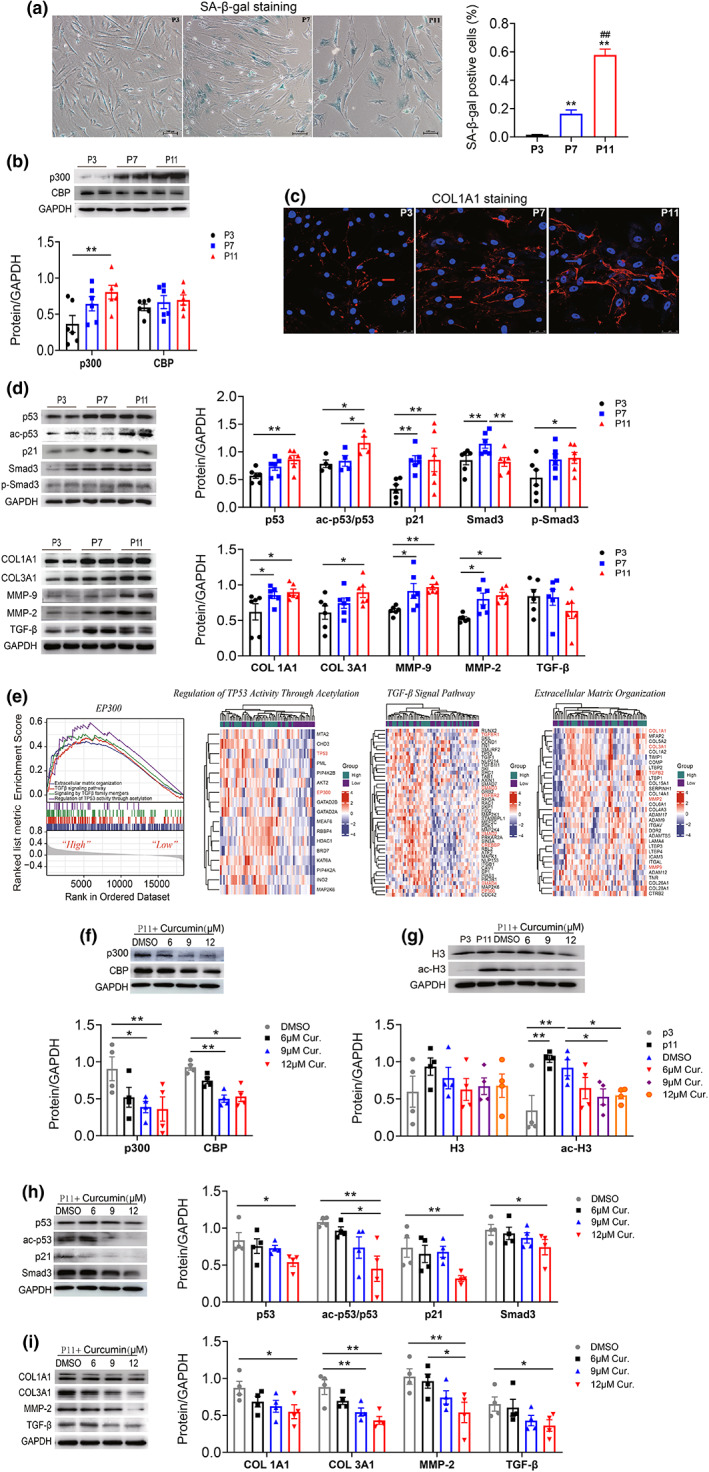FIGURE 2.

Expression of p300, senescence, and fibrosis‐associated proteins were increased in senescent human atrial fibroblasts and the effect of curcumin. (a). Representative SA‐β‐gal staining of human atrial fibroblasts of passage 3, 7, and 11. Scale bars, 100 μm. (b) Representative immunoblots and densitometric analysis of p300 and CBP in human atrial fibroblasts of different passage (P3, P7, and P11). n = 4–6. (c) Representative immunofluorescence staining of COL1A1 protein in human atrial fibroblasts of different passage (P3, P7, and P11). Scale bars, 100 μm. (d) Representative immunoblots and densitometric analysis of p53/ac‐p53, p21, and fibrosis‐associated proteins in human atrial fibroblasts of different passage (P3, P7, and P11). n = 4–6. (e) The potential biological function of EP300 determined by bioinformatics analysis. The results of Gene set enrichment analysis (GSEA) and the significantly enriched genes in the term of regulation of TP53 activity through acetylation, TGF‐β signal pathway, and extracellular matrix organization displayed by Heatmap. (f‐i) Representative immunoblots and densitometric analysis of p300/CBP, p53/ac‐p53/p21, H3/ac‐H3, and fibrosis‐associated proteins in senescent human atrial fibroblasts (P11) treated with 6, 9, or 12 μM curcumin. n = 4. *p < 0.05, **p < 0.01; Data are mean ± SEM.
